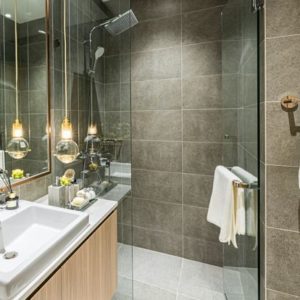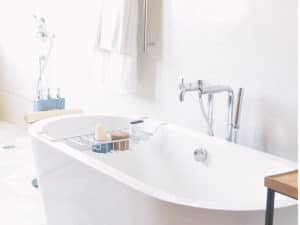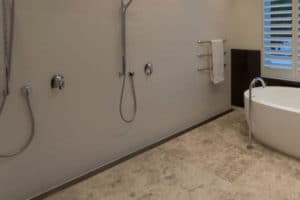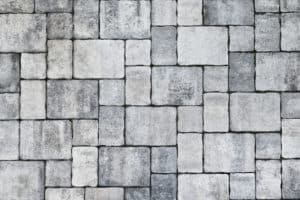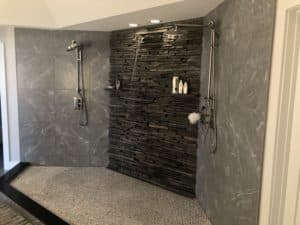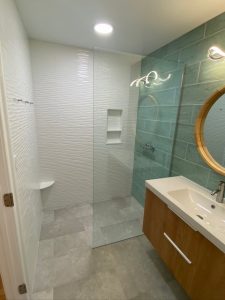You’ve probably seen a few DIY home improvement shows where you see professionals putting together these beautiful and elaborate showers right before your eyes. But have you ever wondered why most tiled showers fail, even when they look flawless on the surface? These shows rarely highlight what causes tiled shower failure, like improper shower waterproofing or hidden tile installation mistakes. Some of them may detail what they’re using and how they’re doing it.
But most of the time, you’re getting the bare minimum. This is great for TV and getting ideas on what you want to do for your shower, but you don’t have TV magic and extra staff on hand in case something happens. You don’t see it in person, so you don’t get a full grasp of what the project entails from start to finish, especially the technical details that prevent failure.
Signs Your Tiled Shower May Be Failing
Even if your shower looks fine on the surface, early warning signs of failure can hide in plain sight. Knowing what to look for can help you catch problems before they turn into major repairs. Here are common red flags:
Cracked or Missing Grout
When grout starts to crack or crumble, it’s often a sign that water is getting where it shouldn’t—and that the surface beneath might be shifting or damaged.
Loose or Wobbly Tiles
Tiles that feel soft underfoot or move slightly when pressed may be coming loose due to moisture intrusion or poor adhesion.
Persistent Musty Smell
A lingering damp or musty odor, even after cleaning, could point to hidden mold or mildew behind the walls.
Water Damage Around the Shower
Stains, bubbling paint, or soft drywall on nearby walls or ceilings can indicate a leak from the shower enclosure.
Discoloration or Efflorescence
White, chalky residue on grout lines suggests water is passing through the tile assembly and pulling minerals to the surface—an early sign of water infiltration.
If you notice any of these signs, it’s time to take a closer look. Left unaddressed, these issues can lead to costly structural damage.
Why Most Tiled Showers Fail
Unfortunately, tiled showers fail when there isn’t enough planning done beforehand, such as sufficient waterproofing, the wrong foundation, faulty construction, and more. Here are a few reasons why your tiled shower is not living up to your expectations:
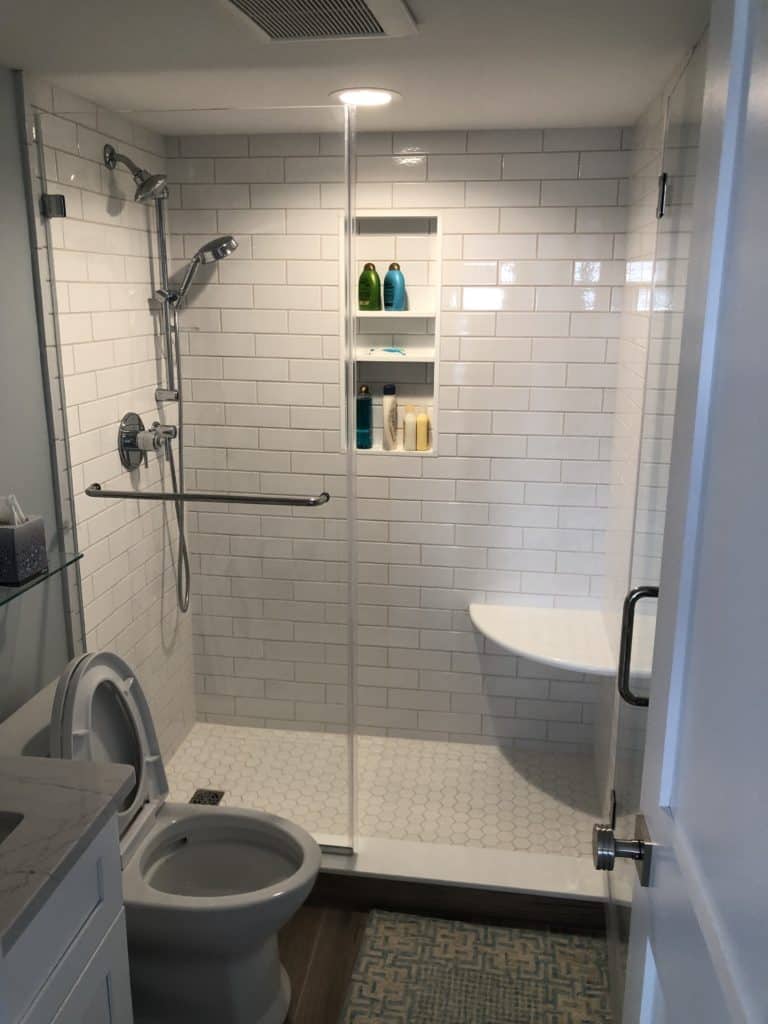
Tile Backer Board
You have to build a proper foundation for your shower to be waterproof and strong enough to handle each use of gallons of water. The tile backer board is that foundation. The first problem people run into is attaching it to a wall with uneven studs. Those studs can create lips, cracks, and break the board. The shower wall must be inspected for any wall studs or rough areas before the tile backer board is attached. If this step is not correct, you can almost guarantee a leaking problem later on.
Shower Waterproofing
Believe it or not, making sure your shower is waterproof is one of the essential steps people forget. Either that or they assume the materials used are already waterproofed enough. A great company to use for waterproofing material is Schluter Systems. It has everything you need to make sure your shower stays waterproof for years to come.
Shower Pan
The shower pan or shower base is where the water gathers to go down the drain. Unfortunately, it’s another area that can be overlooked. One of the most common issues is that there’s not enough of a slope to let the water run down the drain causing it to pool instead. Another common complaint is that the base was not properly waterproofed so the water ends up leaking through the seam instead of going down the drain.
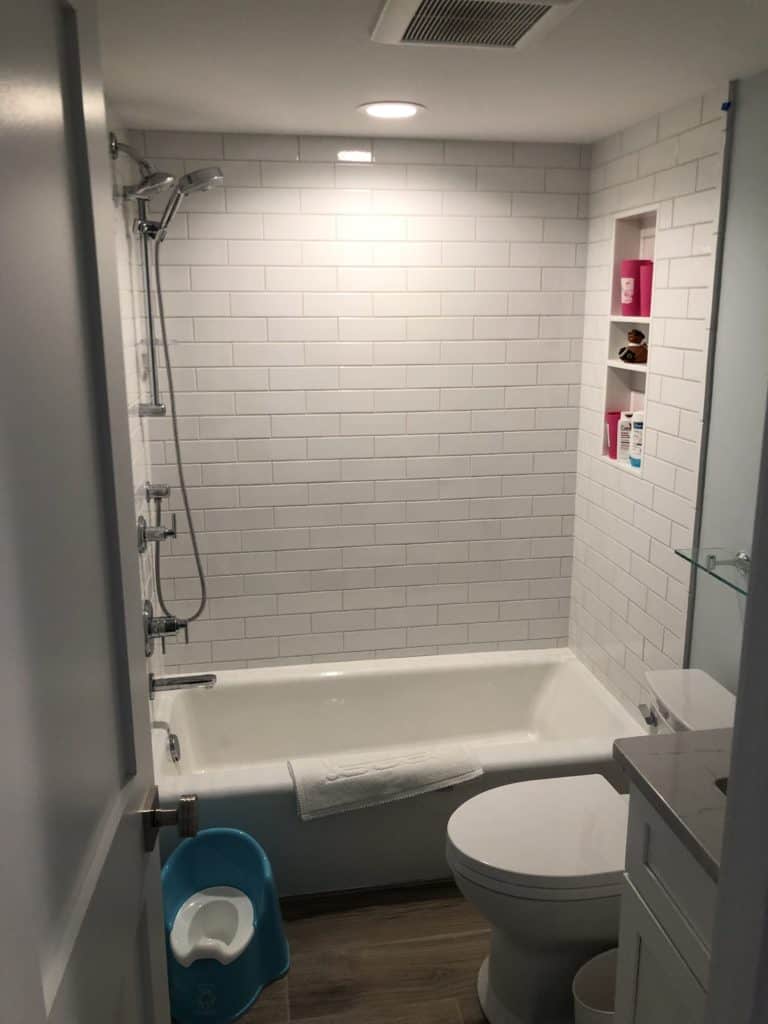
Shower Niche
A shower niche is custom-built shelves installed in the wall for shampoos, conditioners, soaps, and more. It can lead to a massive headache if it’s improperly installed. One of the most significant issues is that the niche isn’t constructed correctly. The structure and shelves are not shored up, causing the grout line to start cracking with the weight. That small crack is all you need for water to get inside the walls. It’s also another candidate for lack of waterproofing, especially if it’s installed later on as a custom feature.
Shower Tiles
The shower tiles are visually an essential part of the shower. Proper adhesive, coverage, and selection are important for each tile. Some tiles are not recommended in showers. A flat substrate is important to eliminate lippage. Most people like large format tiles, so lippage control systems are highly recommended.
Conclusion
Even the best-looking tiled showers can fail if what’s behind the walls isn’t built correctly. From poor waterproofing to uneven tile backer boards and improperly sloped shower pans, the most common mistakes often happen during installation, not after.
Catching early signs like cracked grout or musty smells can save you from major repairs. To protect your investment and avoid costly issues, it’s always best to consult a tile expert who can ensure your shower is built right from the start.

